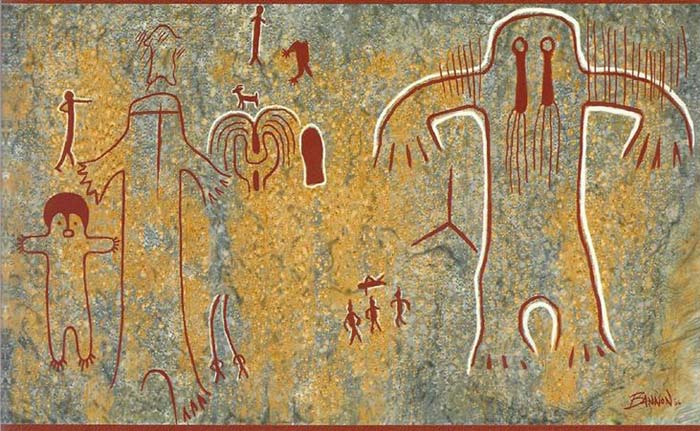It’s said that there are those who claimed us hoax,
And those who only wanted to believe,
Despite the hopes, the fears, the jeers, the jokes;
It seems the sightings caused soft hearts to grieve.
Some praised our strangeness, labelled us benign;
Some called us elders come back from the dead.
But others warned we were not so divine –
We’d steal incautious children from their beds.
We shook the trees, took salmon from their nets;
We poisoned ground and toppled holy art.
We stripped the land, flipped treaties into threats,
And proved ourselves the wilder men at heart.
As well believe the Bigfoot to be real,
As trust a white man’s promise on a deal.
– FR
 |
| Purported Ancient First Nations art depicting Bigfoot, though I can’t find out where it’s from originally... |
Predominantly reported in the Pacific North-West, the name Bigfoot is relatively recent (mid-20th Century). They have many names among First Nations People in the region, and their legend ranges from gentle, through to whistling child-snatchers who must not be named. In 1940, Indian Agent J. W. Burns, republishing his tales from the 1920s as collected from the people of the region, borrowed the term Sasquatch from the Halq̓eméylem sásq'ets (IPA: [ˈsæsqʼəts]) and used it in his articles to describe a hypothetical single type of creature portrayed in the local stories. There are a frankly astonishing number of websites dedicated to researching and preserving the notion of a real-life creature.
No comments:
Post a Comment